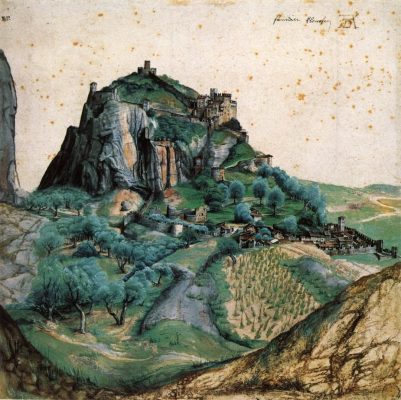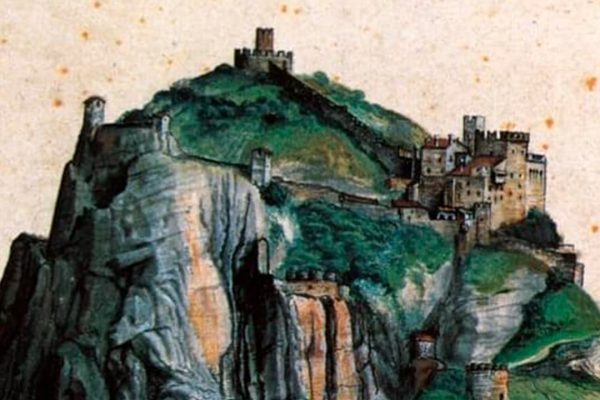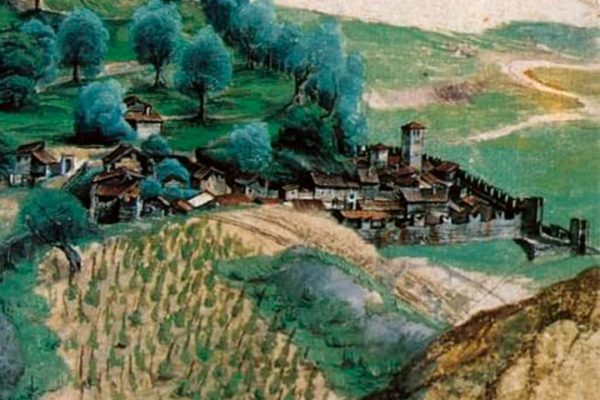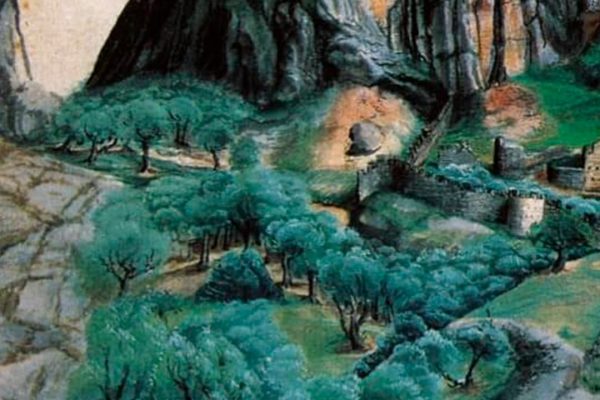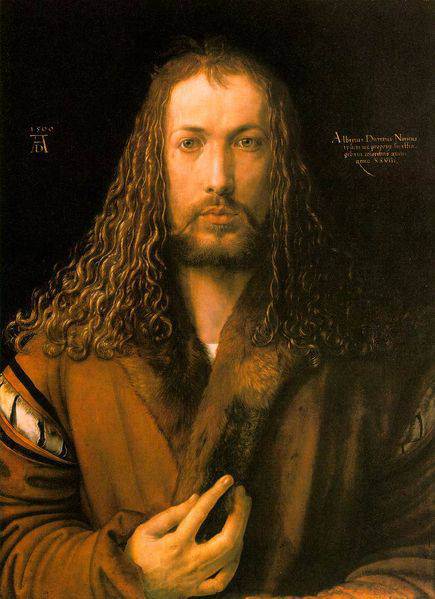Albrecht Dürer · View of Arco
1495 – Watercolour on paper – Louvre, Paris
Albrecht Dürer (German, 1471-1528). 1495. Watercolor on paper, 22,1- 22,1 cm. (8.7 x 8.7 in). Paris, Louvre.
Albrecht Dürer is the unquestionable genius of the German Renaissance and one of the most important artists of the whole history of Art. Audacious and brave, his style combines the sensitivity of Italian Art – which he had the opportunity to study during his travels to Venice – with the strength of German tradition. But his most outstanding characteristic is his interest and love for nature -comparable to that of Leonardo da Vinci- which is evident in watercolours like “Hare” or “Grass” (both created in 1503, exhibited nowadays at the Albertina Museum in Vienna).
When speaking of the pioneers of landscape painting in the Western world, some artists like Joachim Patinir and Albrecht Altdorfer are always mentioned, while the great Albrecht Dürer is often forgotten even though he was arguably the first European artist to paint “pure” landscapes. What can explain this “oblivion”? The most logical explanation is that watercolors have always been a bit overlooked when compared to oil paintings. Another possible explanation is that it seems that Dürer himself despised the landscape genre by not signing his extraordinary watercolors. And finally, Dürer’s contribution to European painting was so extraordinary that labeling him as a “landscape painter” would be underestimating his colossal legacy.
As one of the greatest geniuses of the Renaissance, Dürer was attracted by the nature around him. This interest led him to study in detail and to draw with incredible precision figures of animals (such as “Young hare” from 1502) and plants (“Tall Grass”, 1503). In addition, during and after his first journey to Italy he created some excellent watercolors whose sole subject is the landscape. Among these, the most famous is “View of Arco”.
“View of Arco” is a very accurate representation of the town of Arco, in Northern Italy. The landscape is shown under uniform illumination, without any atmospheric effect, allowing a detailed representation of the mountains, the vegetation and the architecture. Despite its small size, the watercolor has a certain monumentality.
Like other watercolors by Dürer, such as his “Pond in the Forest” (1496) or “View of Kalchreut ” (1511), “View of Arco” is a pure and free landscape that seem to anticipate the works of the great landscape painters of the nineteenth and twentieth centuries.
G. Fernández – theartwolf.com
Follow us on:

